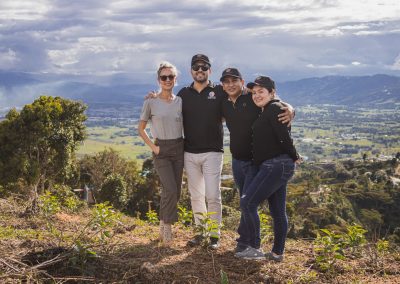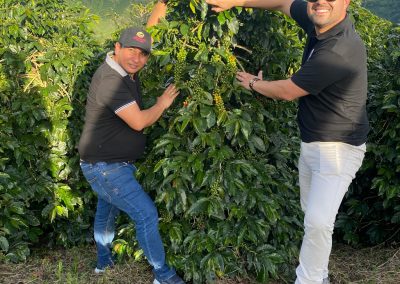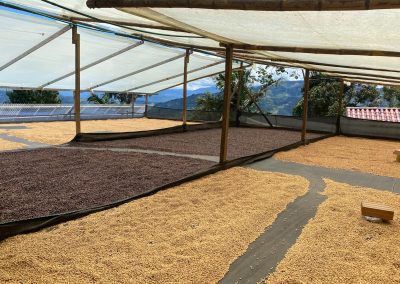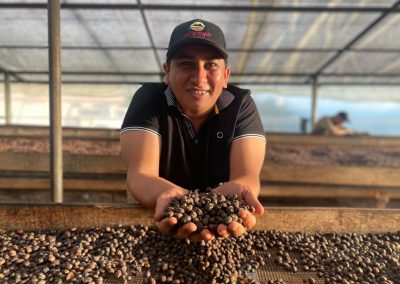Caturra Bourbon
Nectar Red Fruits
Caturra Bourbon Nectar Red Fruits – Data Sheet
– Coffee name: Caturra Bourbon Nectar Red Fruits Washed
– Grade: Product of Colombia
GEOGRAPHIC LOCATION
– Country: Colombia
– Region: Pitalito, Huila
– Farm: La Loma
– Altitude: 1.650 m.a.s.l
GROWING CHARACTERISTICS
– Varieties: Caturra – Bourbon
– Drying: Sun Drying
– Processing: Washed
– Fermentation: Culturing
ORGANOLEPTIC CHARACTERISTICS
– Notes: Watermelon, Blackberries, Strawberry and Cherry
– SCA Score: >88
Farm Info
This lot of Caturra Bourbon Nectar Red Fruits is harvested and produced at Finca La Loma.
Finca La Loma is located in Vereda Agua Negra in Pitalito, Huila, a 12-hectare farm, owned by Rodrigo Sanchez Valencia and his wife, Claudia Samboni, who have been cultivating coffee on La Loma since 2011. Varieties planted on the farm includes Caturra, Variedad Colombia, Pink Bourbon, Pacamara, Laurina, and Gesha. The mill located on the farm includes a de-pulper and tanks for dry fermentation.
In 2017, Rodrigo and his team at Aromas del Sur—the parent company for La Loma, El Progreso, and Monteblanco farms and the Aromas del Sur dry mill (El Puente)—built a cupping lab on La Loma to facilitate sample roasting, crop evaluation, and sourcing at the origin. La Loma sets out to carry out the entire experimental program of the other farms of Rodrigo, thus diversifying their coffees.
Caturra Bourbon Nectar Process
For this process, the Caturra and Bourbon variety was chosen, thanks to its versatility in the preparation of any process and the great sweetness, which allows the micro-organisms such as lactobacillus and saccharomyces cerevisiae to have an optimal fuel to work. These micro-organisms are initially cultivated separately before incorporating them into the coffee, giving way to a large scale where a significant volume of starter culture is produced.
For this specific process, a total of 80 litres of starter culture is extracted from a 200-litre drum which had been mixed with the nectar of locally sourced red fruits. This allows the Brix degrees of the initial mix to be equal to that of the coffee cherries.
The starter culture takes 8 days to reach its optimal state, exactly 190 hours of fermentation until the culture mixes together with the infusion reaches the adequate pH and Brix degrees to enter the coffee.
Besides the nectar of red fruits, Rodrigo feeds the yeasts with some energizing ingredients, such as molasses or brown sugar until the desired level of fermentation with an excellent load of microorganisms is achieved.
Subsequently, after collection, and sorting, the coffee gets pulped and deposited inside a fully sealed 200-litre plastic can along with the 80 litres of the fermented nectar solution that had been previously prepared.
The coffee starts then to ferment for 150 hours, and the team constantly measures the Brix degrees to not drop below 6 as well as the pH levels which are not allowed to drop below 4: this is the balance point for the coffee in order to highlight the notes of the chosen red fruits.
.




